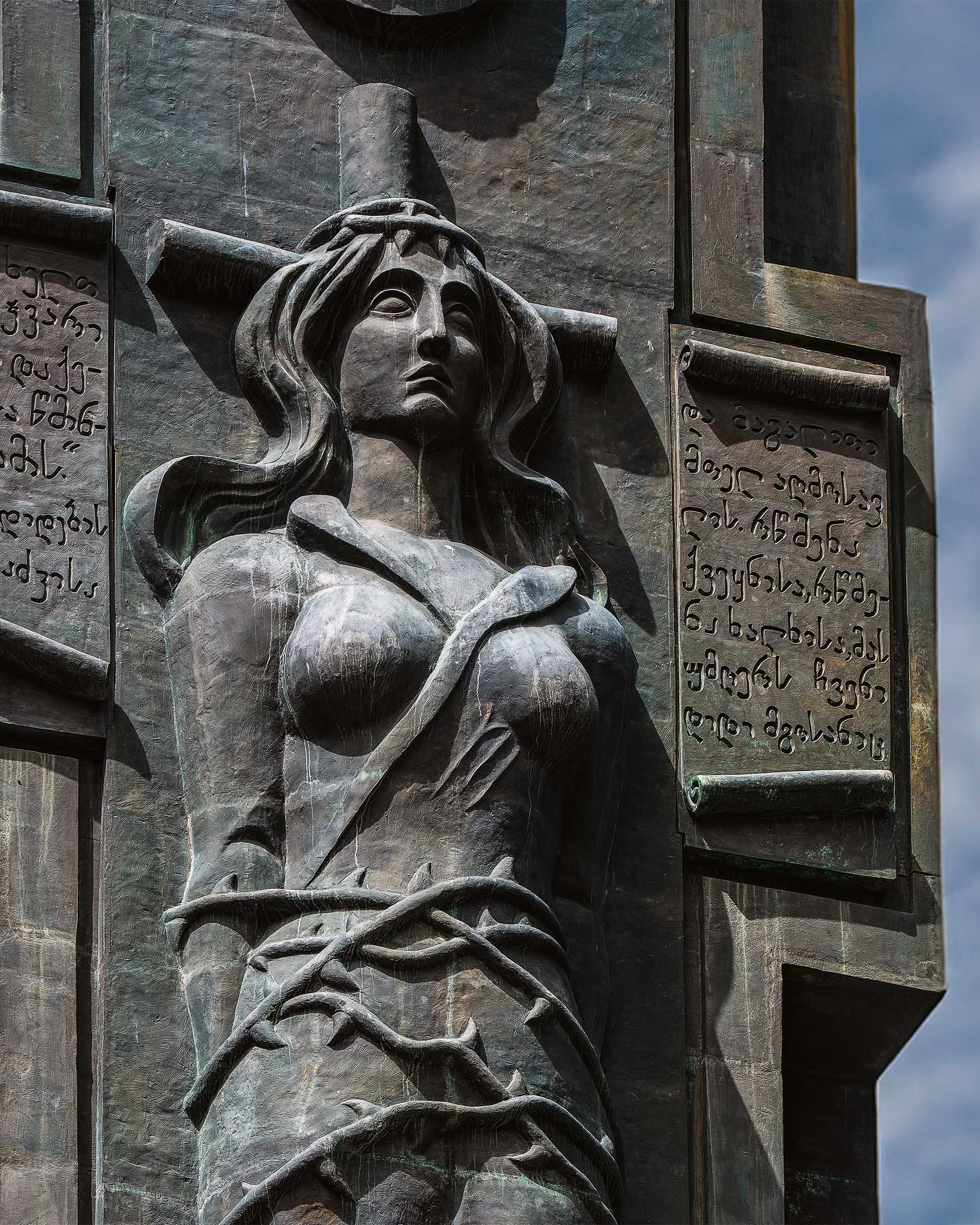
A Stonehenge of the Caucasus
THE BARTHOLDI OF TBILISI
Antonio SoldiIn the late 1860s, Frédéric Auguste Bartholdi sketched a proposal for an 86-foot tall statue of a veiled Egyptian peasant woman holding a torch. The proposed monument would be called Egypt Carrying the Light to Asia and it would stand at the entrance to the new Suez Canal. The sculpture never took shape as planned – but after a few tactical modifications, the Egyptian peasant woman sailed across the Atlantic and morphed into Miss America, or Lady Liberty: the Statue of Liberty. Several other more recent colossi – statues of Peter the Great in Moscow (over 300 feet tall) and of Christopher Columbus in Arecibo, Puerto Rico (350 feet tall) – were the work of Tbilisi’s own Bartholdi, Zurab Konstantinovich Tsereteli, who died at the age of 91 in April of this year. Tsereteli’s most impressive work, however, The Chronicle of Georgia, isn’t a statue, but a whole populace of them, mounted on sixteen massive pillars that call to mind a Stonehenge of the Caucasus; an altar to the nation of Georgia that brings together eminent figures from past centuries and millennia of history, starting with Amirani, a hero chained to a rock whom the Greeks called Prometheus.






